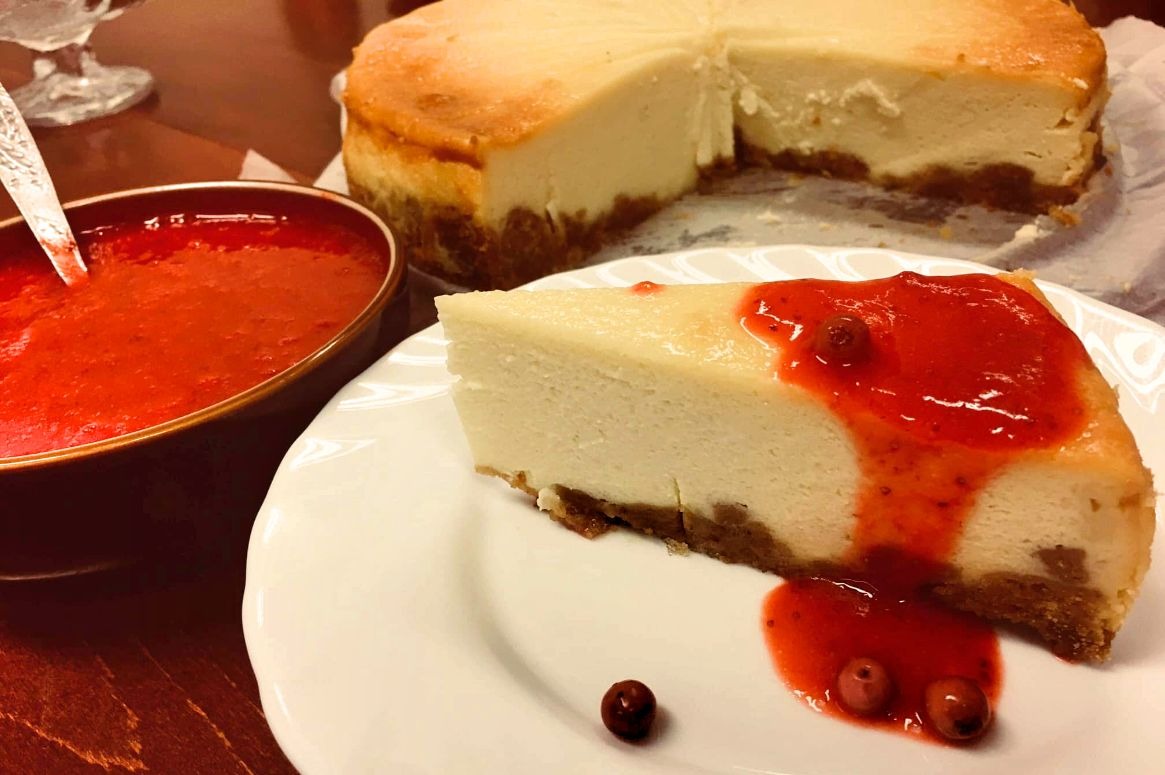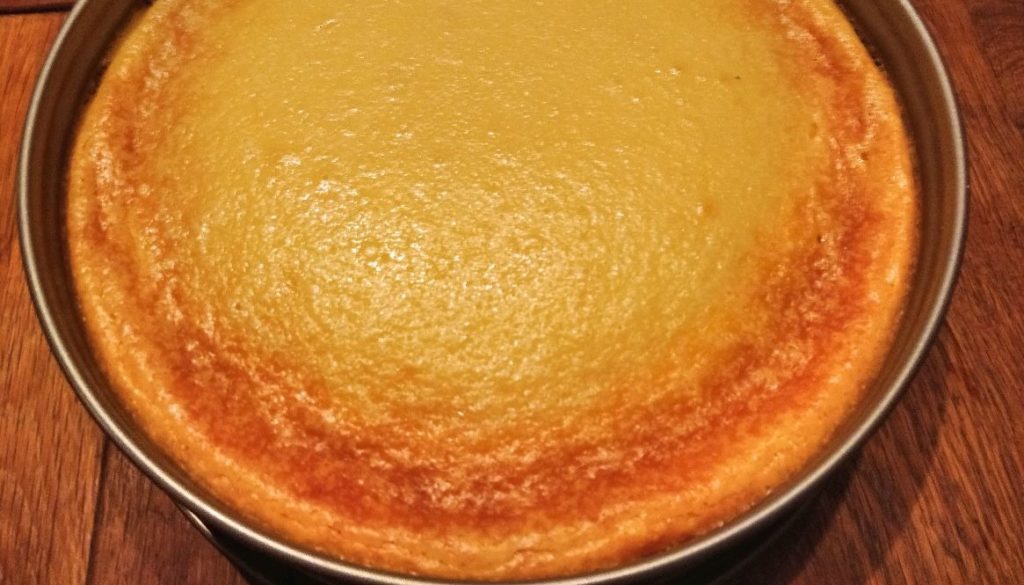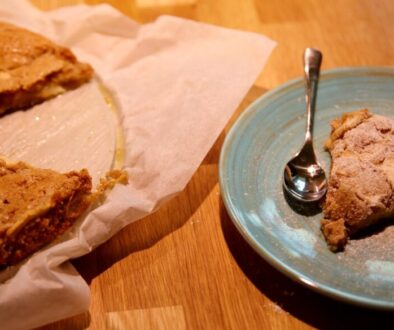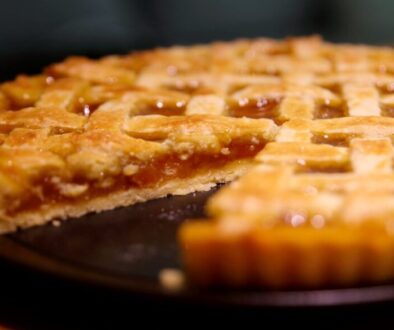Cheesecake
Today I made a creamy cheesecake for my coworkers. When I was asked how many such cakes totally have made, I was in trouble, saying a number from 30 to 40. The exact figure remains a secret. I’ve been making these cakes for 5-6 years and always several cakes a year.
It seems to me that almost every country has its own cheesecake. The type of cheese, the way how it is made and taste of the cake are certainly different, but all these are classified as cheesecakes.
The cheese used to make these cakes varies from classical creamy cheese to cottage cheese, and it is flavored with chocolate, lemon, lime, currants and other berries. Cheesecakes are served with berries on top and without, with sour cream coating and without.
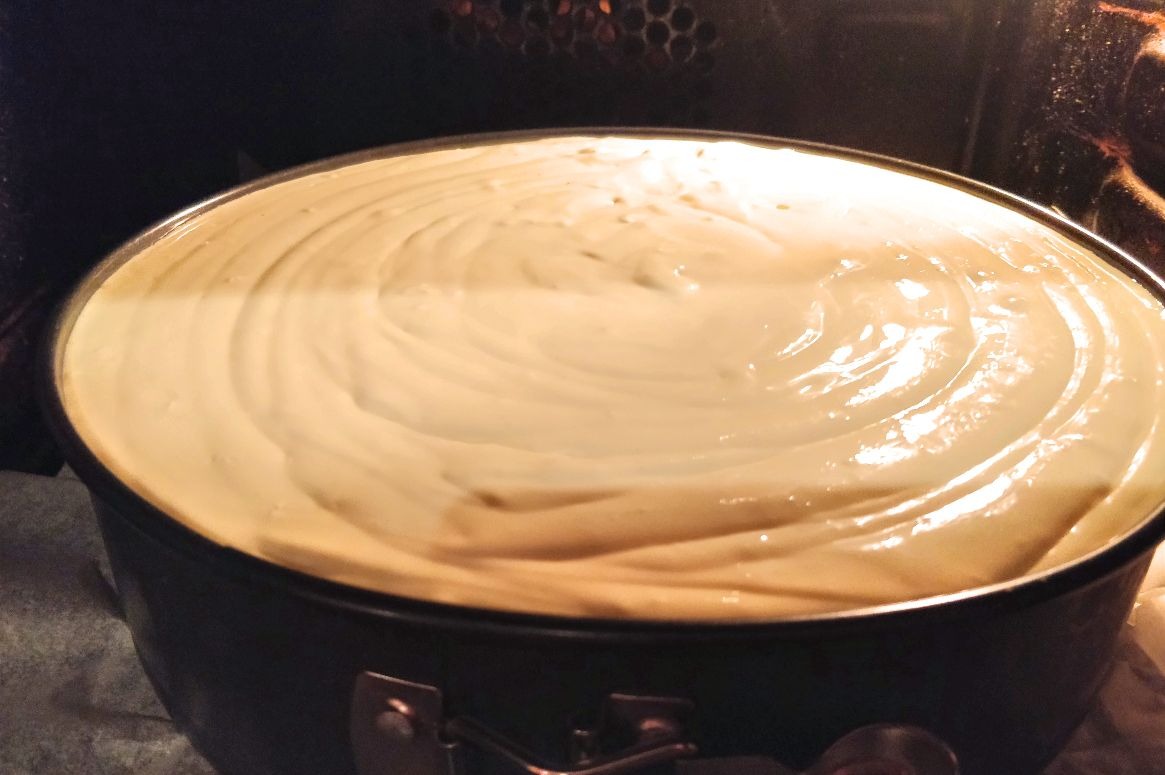
And then I found that Harold McGee in his great book defines cheesecake not as a cake, because the dough is not used to make this cake. In his book, McGee has devoted a whole chapter to cheesecake science. By definition, 1 egg is mixed with 250 ml of filling to achieve the correct consistency. Flour or starch stabilizes this cake. Sugar is also important to balance the bitter or sour side-taste of the cheese. Sugar does not have to be added to the cake, you can also use good sweet jam.
It is recommended to bake this cake at 163 degrees. With the accuracy of my oven, it is impossible to control the temperature with such accuracy. It is clear to me that 160-175 degrees are the temperature gap giving a great result. A water bath is needed to create steam at baking of the cake.
The main problem with cheesecakes is that they tend to crack and collapse. To avoid this, you need to follow these guidelines: 1. Mix the components slowly and for a long time. Do not foam air into the cake. 2. Bake for a long time on the lower side of the oven. This allows dispersing the excess of the air. 3. Do not over-cook. It dries the surface of the cake, makes it crack, and is also the result is not so tasty. 4. Turn the oven off when the edges of the cake start turn lightly brown and leave the cake to cool for 30 minutes in a cool oven on the door.
About history. It turns out that the cheesecake was already made in ancient Greece, and it is mentioned in literature the 5th century BCE. According to Wikipedia, the so-called modern cheesecakes era begins in the 14th century in England. A cake like I made was made firstly by William Lawrence in New York in 1872. This cake is especially cream which is achieved by adding a large amount of sour cream. That’s it. If you follow the instructions below, a good result is guaranteed.
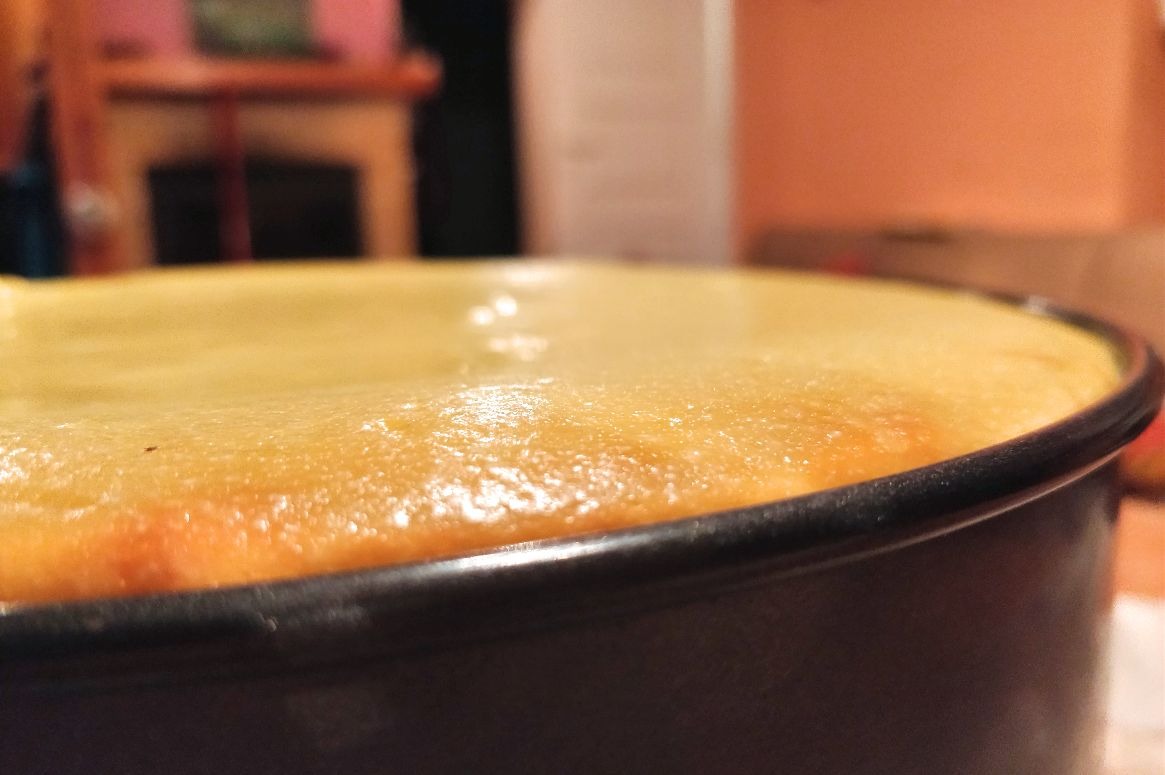
Preparation time: 2-3 hours
Level: Complex
Quantity: one cake 12-16 slices
Ingredients:
Bottom
250 g cookies (digestive, oat biscuits, other biscuits having more rough texture)
60 g butter
50 g of sugar
Filling
1000 g of cream cheese (I prefer and recommend unflavoured Creme Bonjour cream cheese or Philadelphia cream cheese)
200 g of sugar
3 stacked tablespoons of flour
4 big eggs
2 teaspoons vanilla sugar
250 g of sour cream
Preparation:
1. Melt butter, crumble roughly biscuits, add sugar, mix to a homogeneous and cover the bottom of the cake. Press even.
2. Mix the filling components with a spoon or mixer at a very low speed
3. Pour the filling onto the biscuit bottom and bake at 165-170 degrees in the lower part of the oven, keeping a water bath at the bottom of the oven for steam.
4. Bake for 1 hours until the edges of the cake start to lightly brownish. Turn off the oven, leave it in the oven and let the cake in the oven for 30 minutes.
5. Do not remove the cake from the mold until the cake has completely cooled. As I heard today, the cake tastes better if cooler than in room-temperature. Obviously, she was right with that.
Serve with fresh strawberry jam. Today’s cake was served with a wild strawberry jam, which was brought by a kind and nice co-worker.
Ready !!
